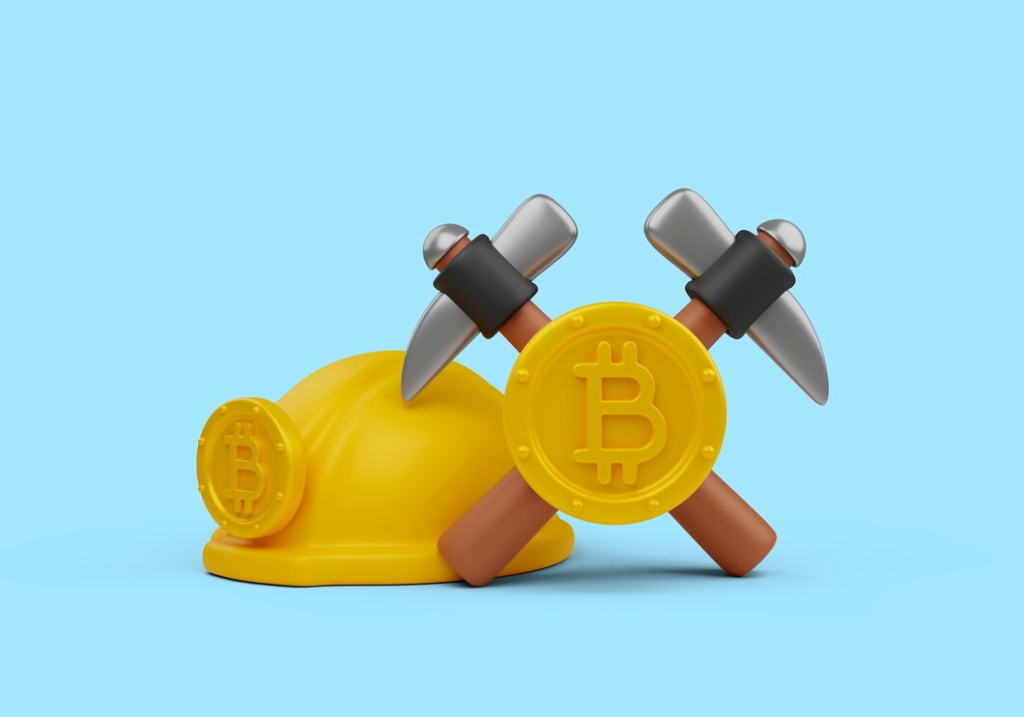Bitcoin mining has been one of the hot topics. However, the comprehension of the concept is at the same time difficult for most people. With the ever-increasing interest in cryptocurrencies, particularly in Bitcoin, the need to have an insight into mining has risen much. Most people are puzzled by how Bitcoin mining works and why with the use of special hardware and a big energy supply it’s gaining such popularity.
Bitcoin mining works in a decentralized fashion with no central authority or bank controlling it. This is enabled by means of a distributed ledger technology called blockchain, which records and verifies transactions. Unlike other conventional monetary systems where the intermediary closes the transaction, Bitcoin relies on a network of computers that solve complex mathematical problems to validate and settle transactions. These computers are called miners, and they ensure the integrity of the blockchain.
In a more detailed explanation, it encompasses powerful computers solving complex mathematical problems and thereby validating and registering the transactions within the distributed ledger of the Bitcoin Blockchain. Besides securing the network, this process introduces new Bitcoins as a reward for the miners who actively participate. With the understanding of these basic things, anyone can get a clearer view of Bitcoin mining and its role in a cryptocurrency ecosystem.

1. The Basics of Bitcoin Mining
What is Bitcoin Mining?
Mining of Bitcoins is the process through which Bitcoins are created and transactions are simultaneously verified in the blockchain. In simple words, this process involves complex mathematical puzzles to work out while validating the transactions, hence securing the network.
Why is Bitcoin Mining Important?
– Transaction Verification: It gives assurance regarding the authenticity of the bitcoin transaction and constitutes the phenomenon of double-spending null.
– Network Security: This keeps the network safe from frauds and hackings.
– New Bitcoin Creation: Brings new Bitcoins into the overall circulation, based on the predetermined supply schedule.
2. How Bitcoin Mining Works
The Role of Miners
Miners are persons or organizations that apply special computers to solve mathematical problems. These problems are part of the cryptographic algorithm underlying the Bitcoin blockchain.
The Mining Process
– Recording Transaction: When a Bitcoin transaction is initiated, it is broadcast over the network.
– Problem Solving: Miners are competing to be first to solve a complicated mathematical problem related to the transaction.
– Block Verification: Once a problem has been successfully solved, the block of transactions is verified and attached to the blockchain.
– Reward: The winning miner receives a reward in the form of newly-minted Bitcoins.

3. The Hardware and Software Needed
Mining Hardware
– ASIC Miners: These are Application-Specific Integrated Circuits. They are specialized equipment to ensure effective Bitcoin mining.
– GPU Mining: Most of the mining using a GPU was done at earlier stages; however, nowadays, they are not that efficient since their efficiency has been overcome by ASICs.
Mining Software
– Mining Programs: The mining program, like CGMiner or BFGMiner, links mining hardware to the Bitcoin network.
– Mining Pools: The greater part of miners has joined pools for sharing rewards because multiple miners can pool their computational resources.
4. The Economics of Bitcoin Mining
Initial Investment
– Hardware costs: Considerable mining hardware can be very expensive sometimes in the range of a few thousand to tens of thousands of dollars.
– Electricity cost: Large mining operations require a lot of electricity, therefore most of the costs depend on this element.
Profitability Factors
– Bitcoin price: The profits will differ depending on the Bitcoin price. The higher the price of Bitcoin, the higher the profit.
– Mining difficulty: With each new miner in an attempt to solve the mathematical problems to win prizes, earnings will definitely have an impact.
– Electricity Rates: Lower electricity rates will expand the profit margin because mining takes up a lot of energy.
5. Impact on Environment and Challenges
Energy Consumption
– High Use: Mining of Bitcoin requires high energy which paves way for the degradation of the environment.
– Sustainable Methods: Some miners focus on renewable energy sources for reducing the effect on the environment.
6. Future of Bitcoin Mining
Technological Advancements
– Improvement in Efficiency: There are continuous efforts of mining hardware advancement in the pipeline to improve the output and consume less energy.
– Government Regulations: Any change in governmental policy can affect mining activities and also energy consumption.

Alternatives
– Cloud Mining: A process of renting of mining power by individuals from remotely located data centers without actually managing the hardwares.
– Other Cryptocurrencies: In case, the mining of this cryptocurrency is difficult and requires a lot of energy, then other cryptocurrencies should be searched for mining.
Conclusion
Mining is, therefore, an essential activity for the security and integrity of the whole network, in addition to introducing new Bitcoins into circulation. Understanding basic mining-from hardware and software to economic factors and environmental impact-allows people to make informed decisions about their involvement in this burgeoning field. As technology evolves, solutions will be found and Bitcoin mining will remain an integral part of this ecosystem.
